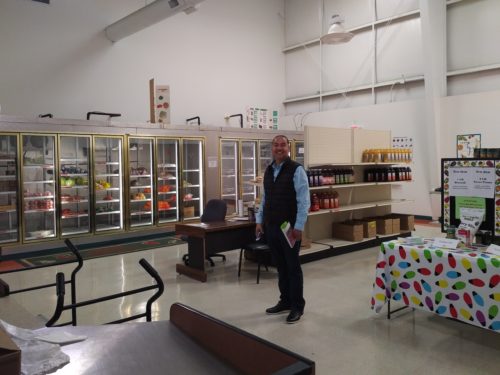Food Distribution Program on Indian Reservations: A prototype for the Harvest Box? Not exactly.
Last week I discussed my skepticism about the Trump Administration’s plan to replace some SNAP benefits with boxes of 100% American-grown commodities.
NPR’s The Salt is skeptical for a different reason: the experience of Native Americans with the Food Distribution Program on Indian Reservations (FDPIR).
Since 1977, the U.S. Department of Agriculture has bought nonperishable foods to distribute on Indian reservations and nearby rural areas as part of the Food Distribution Program on Indian Reservations. The program was designed as an alternative to SNAP for low-income Native Americans living in remote areas without easy access to grocery stores. The food boxes delivered were filled with canned, shelf-stable foods like peanut butter, canned meats and vegetables, powdered eggs and milk.
It’s consequences? A high prevalence of overweight and type-2 diabetes on Indian researvations. As The Salt quotes:
“There’s even a name for it – it’s called ‘commod bod.’ That’s what we call it because it makes you look a certain way when you eat these foods.”
As it happens, I was in Albuquerque last week speaking at the Native American Healthy Beverage Summit sponsored by the Notah Begay III Foundation (I got to meet Notah Begay III when he introduced my talk).
I asked everyone I could about experiences with FDPIR. Those who grew up in households participating in the program cited several issues:
- Culturally inappropriate
- Poor quality
- Induced dependency
- Undermined traditional diets
- Part of barter/trade economy (unwanted items were bartered, traded, sold, or fed to pets)
Justin Huenemann, the CEO of the Foundation, took me to an FDPIR distribution center on a reservation near Bernalillo.

This was a big surprise. It was clean, well stocked with fresh produce, frozen meats and fish (bison, salmon), and canned and packaged foods, all of them reasonably healthy. Ordered items are delivered by truck to people who cannot come into the center.
The USDA has worked hard to improve the program (see fact sheets and evaluations). Participants can choose from a long list of eligible foods.
But: the program serves only about 90,000 participants at a cost of $151 million in 2017. Scaling it up to 40 million SNAP participants—and nearly $70 billion in benefits, seems unlikely. Even scaling it up to the 16.7 million households promised by USDA seems iffy.
In any case FDPIR is NOT the prototype for the Harvest Box.
The prototype is the Commodity Supplemental Food Program (CSFP) for low-income elderly. This program, serving 600,000 seniors with a $236 million budget in 2017, offers a more limited selection of food options, none fresh. It distributes the boxes through food banks and other nonprofits who then do the actual deliveries. CSFP raises many if not all of the issues mentioned by my informants.
I still think this is a smokescreen to distract attention from budget cuts to SNAP but I was grateful for the opportunity to see the FDPIR in action. The quality of the foods looked pretty good to me—an oasis in a area where healthy foods are not readily available.

